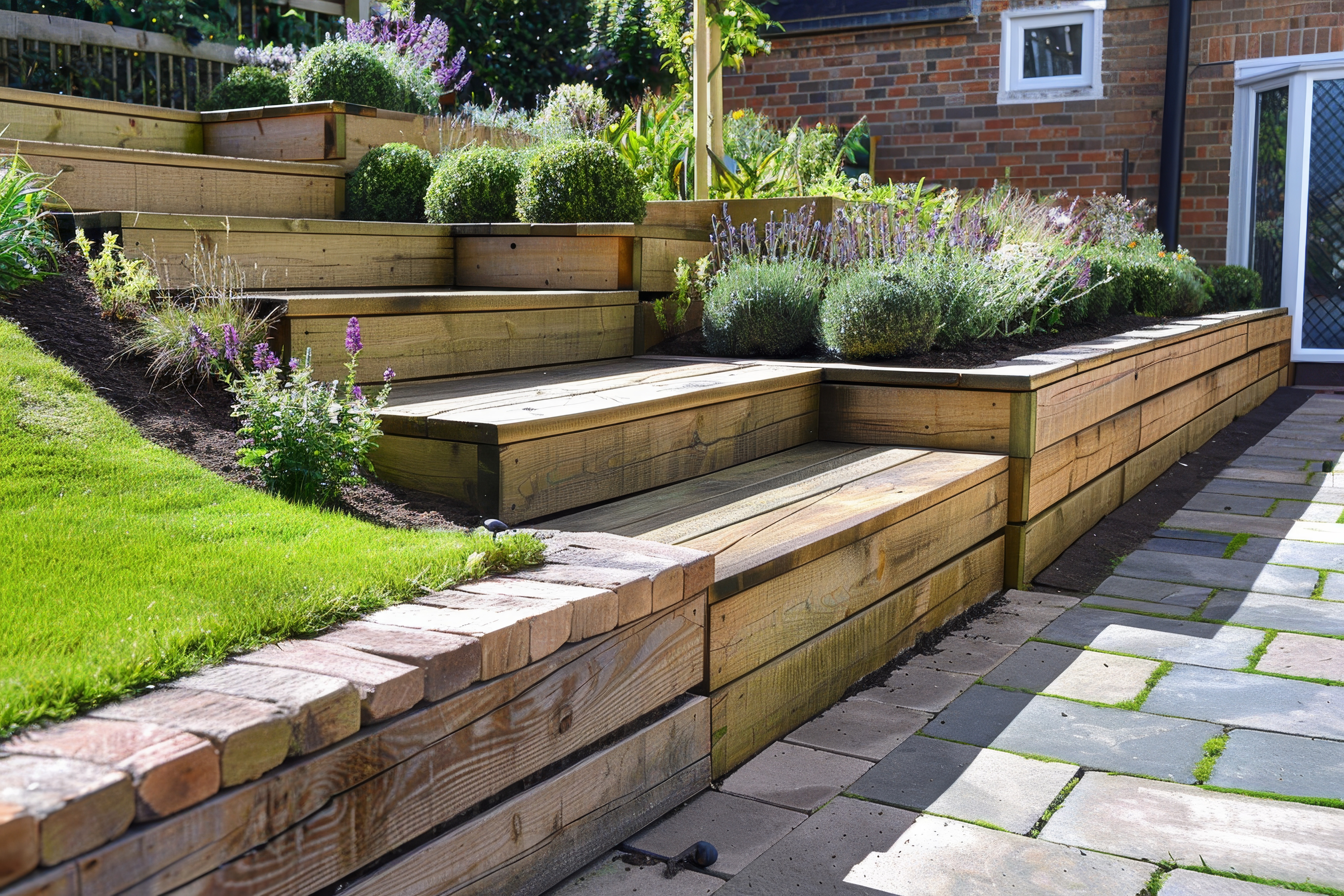

Why Raised Beds Are Still the Easiest Way to Transform Your Garden
Practical, stylish, and perfect for DIY – here's why they’re still top of the list
Out of all the garden projects we help customers with at Wood Green Timber, raised sleeper beds are one of the most popular — and they’ve stayed that way for years.
Why? Because they’re easy to build, incredibly versatile, and they instantly tidy up any garden. Whether you're growing veg, levelling off a slope, or just adding structure and style to a tired lawn, raised beds deliver big results without the stress (or price tag) of a full landscaping job.
Here’s why they’re still a go-to for garden lovers across North London and Hertfordshire, and how you can build your own with the right materials.
1. Raised Beds Look Smart – Instantly
Tired borders, patchy grass, or awkward corners can all be transformed with raised beds. They add sharp lines, clean edges and a solid feel to your garden layout — perfect alongside new paving, fencing or decking.
They work in:
-
Traditional or modern gardens
-
Formal layouts or wild planting schemes
-
Tiny yards or big open spaces
Build them square, rectangular, L-shaped, stepped, or curved — you’ve got complete design freedom when you use timber sleepers.
2. They’re Incredibly Versatile
Raised beds are about more than just growing veg. Here’s what customers are using them for right now:
-
Veg patches – perfect for tomatoes, salad, herbs and root crops
-
Flower displays – create height and variety in your planting
-
Retaining walls – hold back sloping ground with strength and style
-
Low garden walls or edging – no bricks or mortar needed
-
Built-in seating or steps – double up form and function
-
Planter dividers or zoning – ideal for modern garden layouts
And you can stain, oil, or leave your timber natural depending on the look you want.
3. They’re Easy to Build (Even if You’re Not a Pro)
This is why raised beds are a favourite with DIYers. You don’t need special tools or expert skills — just a clear plan, the right fixings, and solid materials.
We recommend:
-
Treated softwood sleepers – affordable and ideal for 10–15 years’ use
-
Oak sleepers – a premium option that can last 20–30 years with no treatment
-
Timberlok screws – strong, easy to drive, no pre-drilling required
-
Sleeper brackets – for quick corners and extra strength
A basic raised bed can be finished in a few hours. Want to get more creative? Stack levels, cut curves, or build custom shapes with confidence — we’ll help you plan it.
4. Great for Growing – and Your Back!
If you’re into growing your own, raised beds make gardening much more comfortable. You can plant earlier in the year thanks to warmer soil, avoid waterlogging, and keep weeds at bay with a bit of membrane and mulch.
They’re ideal for:
-
Gardeners who don’t want to bend or kneel
-
New growers who want control over soil type
-
Urban gardens with poor or compacted ground
-
Kids’ planting areas – get them involved in something hands-on
What You’ll Need (From Us)
-
Treated softwood sleepers – 2.4m & 3.0m lengths in stock
-
Oak sleepers – strong, long-lasting, and low maintenance
-
Structural screws (Timberloks)
-
Sleeper brackets & fixings
-
Postmix (if needed for post supports or retaining beds)
-
Weed membrane
-
Topsoil & mulch (we can recommend local suppliers)
Tools You’ll Need
-
Handsaw or circular saw (for cuts)
-
Drill/driver or impact driver
-
Level, tape, square
-
Shovel/spade and wheelbarrow
-
Optional: landscaping fabric staples
Wood Green Top Tips
-
Keep things level – A sloping bed can look wonky fast. Check each layer with a spirit level.
-
Go thick on soil – Aim for 30–45cm depth for most veg and flowers.
-
Add drainage – Use gravel or broken bricks at the bottom for better water flow.
-
Plan your fixings – Screw from the inside where possible for a cleaner finish.
Ready to Build Your Own?
Whether it’s your first project or you’re levelling up your garden space, we’ve got the stock, advice and delivery service to help you get it done right. Pop into our Wood Green or Potters Bar branch, or give us a call — we’ll help you work out what you need and how to build it properly.
Wood Green Timber — proper materials, proper help, no nonsense.
